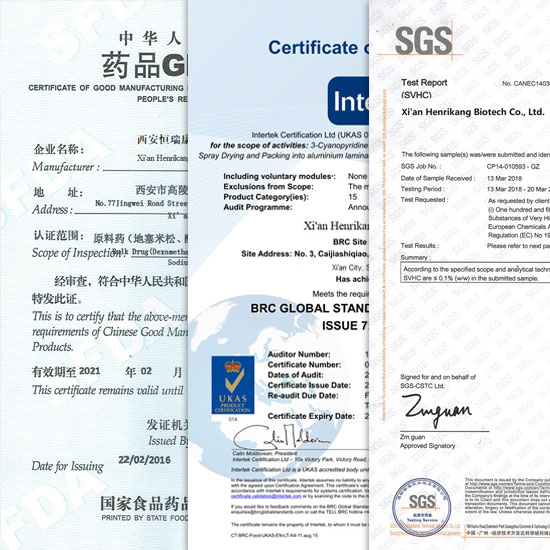





Related Attributes
Product details
Mannose, the only carbohydrate nutrient used clinically, is widely distributed in body fluids and tissues, especially in nerves, skin, testicles, retina, liver and intestines. It is directly used to synthesize glycoproteins and participate in immune regulation. Many diseases are caused by the lack of enzymes in mannose saccharification.
Its physiological effects in the human body are as follows:
1) Regulate the immune system
2) There are 4 receptors on the surface of macrophages that can capture antigens, all of which contain mannose components
3) Increase wound healing
4) Anti-inflammatory effect
5) Inhibit tumor growth and metastasis, increase cancer survival rate
6) Can avoid certain bacterial infections.
Uses of D-mannose.
D-mannose is a carbohydrate that plays an important role in the glycosylation of molecules in a variety of cellular processes. It is involved in the N- and O-glycosylation of bovine protein products used in infant formula. It is also responsible for the O-glycosylation of the helper T-cell-derived cytokine interlukin-17A, an important cell signaling molecule.

Preparation of D-mannose.
D-mannose can be prepared by hydrolysis of polysaccharides rich in D-mannose (ivory palm seeds, yeast mannan, etc.). It can also be synthesized by oxidation of D-mannitol (a byproduct of the kelp iodine industry) with hydrogen peroxide in the presence of ferrous ions. It can also be prepared by diastereoisomerization of D-glucose or by carbon chain extension of D-arabinose.

Prodct Method of D-mannose.
Coconut shell is hydrolyzed with sulfuric acid to obtain α-mannose.
WHY CHOOES US?

OUR CERTIFICATE

CUSTOM PROCESS

OUR PACKAGE

OUR EXHIBITION

OUR FACTORY

Shipping

Pharmaceutical Intermediate manufacturers
©2022 Xi'an Henrikang Biotech Co., Ltd.,